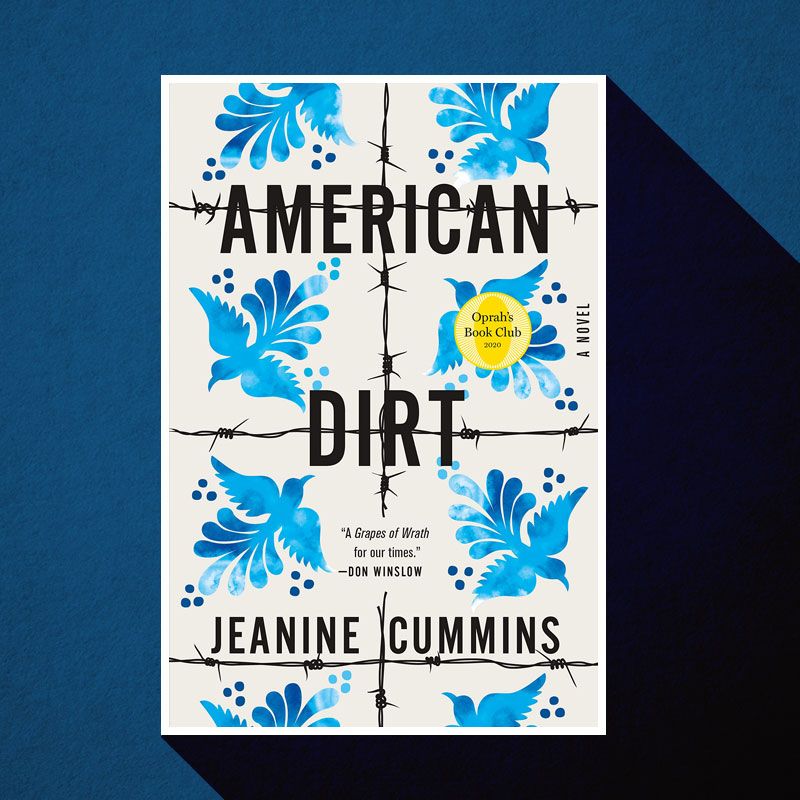American dirt is a thriller about a middle-class Mexican woman and her son fleeing brutal cartel violence and joining the flows of Central American refugees heading for the “safety” of the United States.
What I’d heard about American Dirt, before I was given a copy by a friend, was that it was pretty awful: that it was patronising, ‘pity porn’ and presented damaging stereotypes. That it was appropriating the suffering of Mexicans caught up in the collapse of law and order brought about though corruption and the rise of powerful drug cartels. Most fundamentally, that the author – a white American – was not really qualified to understand the lives of these people and tell such a tale.
All of these factors, and the killer blow – that this was an ‘Oprah’s book club’ selection - would normally be enough to dissuade me from reading a novel. But an animated chat with a Californian friend, who was also raising concerns about the legitimacy of the novel, stimulated a contrarian response: (“why should an author’s ethnicity preclude them from telling certain stories? Imagination isn’t racially specific!”). I was now curious to see what all the fuss was about. So when an unexpected Amazon package turned out to be a copy of the book from my Californian friend, I was secretly pleased.
The book, it has to be said, is gripping from the opening sentence. Rather like the opening scene in Quentin Tarantino’s ‘Inglorious Basterds”, the book opens with a taut, silent, stress-inducing hiding scene. A 10-year-old boy in his grandmother’s bathroom in Acapulco hears a series of thuds of gunfire. The sounds are the execution of his entire extended family, with the exception of his mother - who was helping him in the bathroom – in a revenge attack. The boy and his mother escape the massacre, but know they are marked for murder, and have to escape, not only from the city, but from the tendrils of the cartel, which extend throughout Mexico.
Their flight forces the middle-class, intellectual mother to accept multiple humiliations – most fundamentally that she has become something she once pitied, but also saw as somehow other, and perhaps even less human: a migrant.
From that moment on, the book is effectively one long game of cat-and-mouse, as mother and son move through the shadows, aware that everyone from other migrants, to hotel or hostel staff, bus drivers or even government officials or airline staff might be in the pay of the cartel. Their journey sees them face life and death struggles and the kind of casual brutality one would expect from SS officers in melodramatic depictions of World War II. As they descend into paranoia and terror of other people, their faith in humanity is restored by their meeting with two Honduran teenage girls – also fleeing gangs and sexual violence for a new life in ‘El Norte’.
The book paints a picture of a trail of death and suffering in the time of Trump. A knowledge that even safe arrival may mean return, and that even a mother’s love may not be enough to protect a child from the monstrosities of the adult world. But it is also a tale of resilience, strength, kindness and grief.
The bad bit, though, is that many of the critiques are fair. Characters are often one-dimensional or clichéd depictions, and the depth of understanding of both the nature and causes of migration feels almost non existent. While critiques of the book that focus on the author's lack of lived experience of migration or her (white) ethnicity smack of cultural purism that values race over humanity, imagination, art and research, Cummins unfortunately does not deliver on those points. The migrants we spend time with are fleeing the sorts of threats that US or UK tabloid news audiences consider acceptable reasons for flight - sexual exploitation, potential murder at the hands of drug gangs or life as orphan children picking through garbage heaps - while their adversaries are callous gang-members with little or no back-story, corrupt police officers and officials or brutal immigration enforcement officers who mete-out executions with relish. Others - migrant workers, returned irregular migrants and other sundry mobile people - pop up along the way, invariable willing to risk their lives for the golden opportunities of 'el Norte', but with little indication of why. The Mexico of the book is a failed state populated by assassins, victims and the occasional noble hero, while 'el Norte' - if you can dodge the border guards and survive the trek across the desert - is a land of picket fences, ice-cool lemonade and the rule of law.
To compare this tale of flight and suffering to a work of art like the Grapes of Wrath is like comparing Scooby Doo to Spirited Away.
All of this said, I couldn’t put it down and enjoyed reading it a lot. But then, I like Scooby Doo, too…
